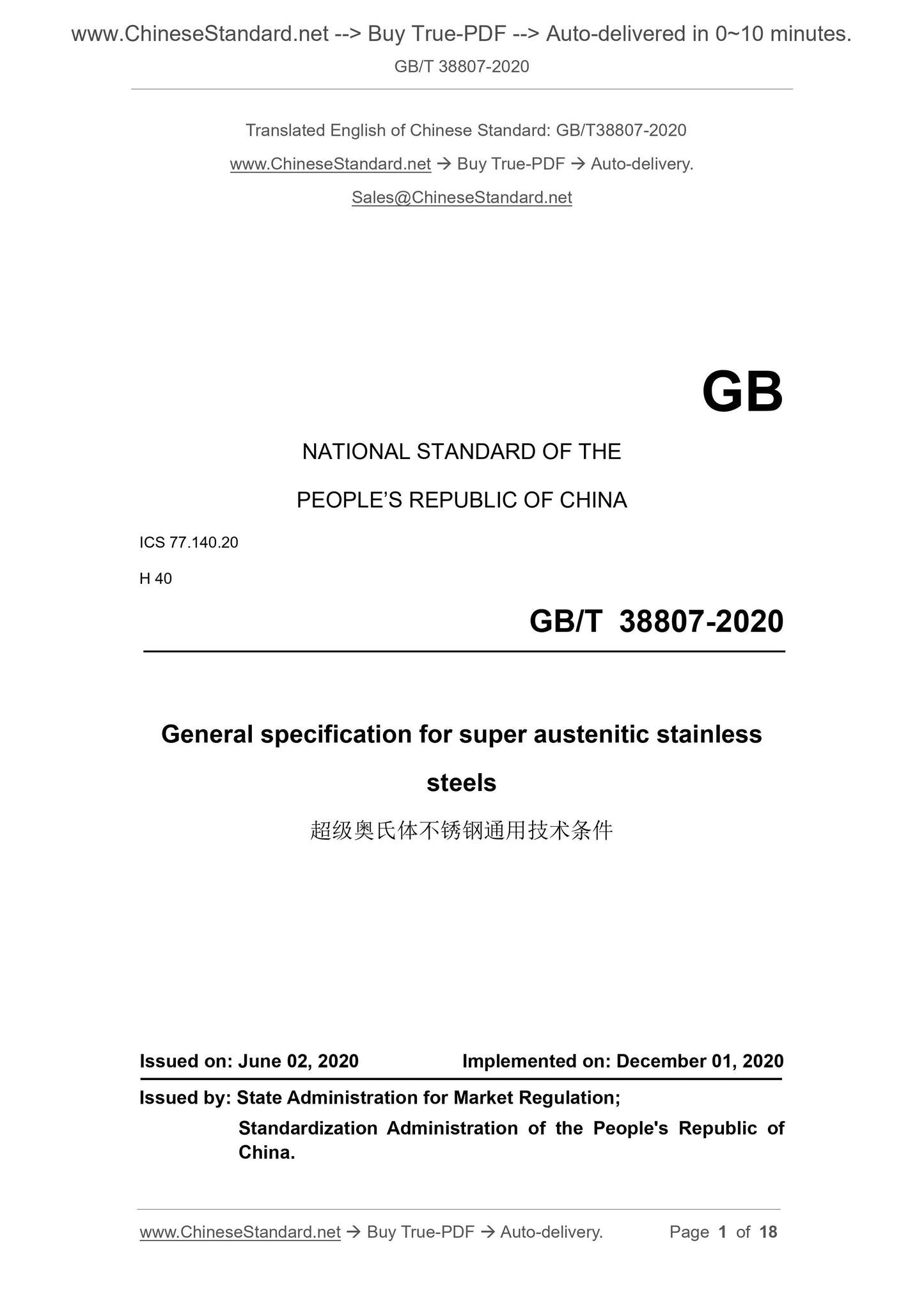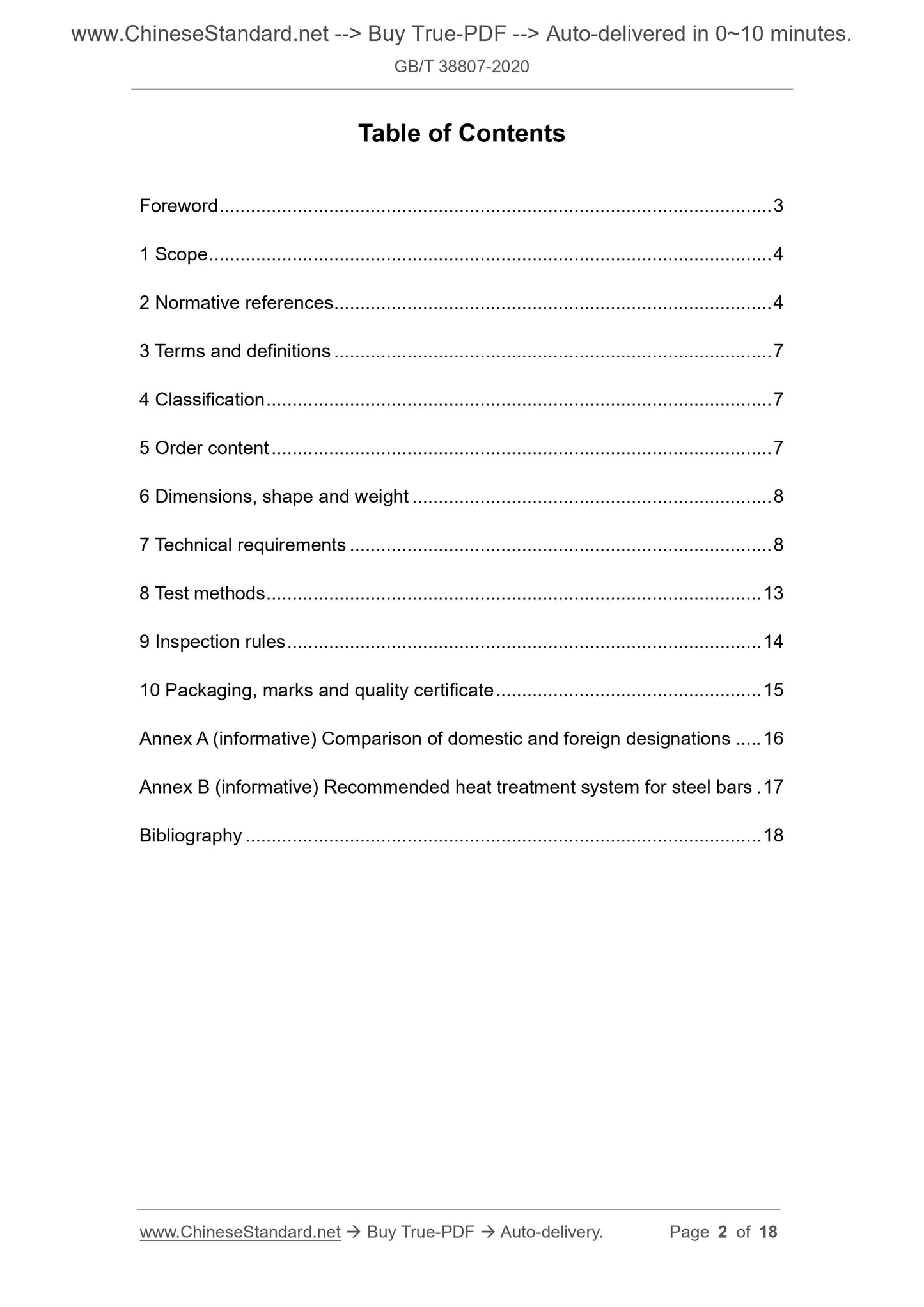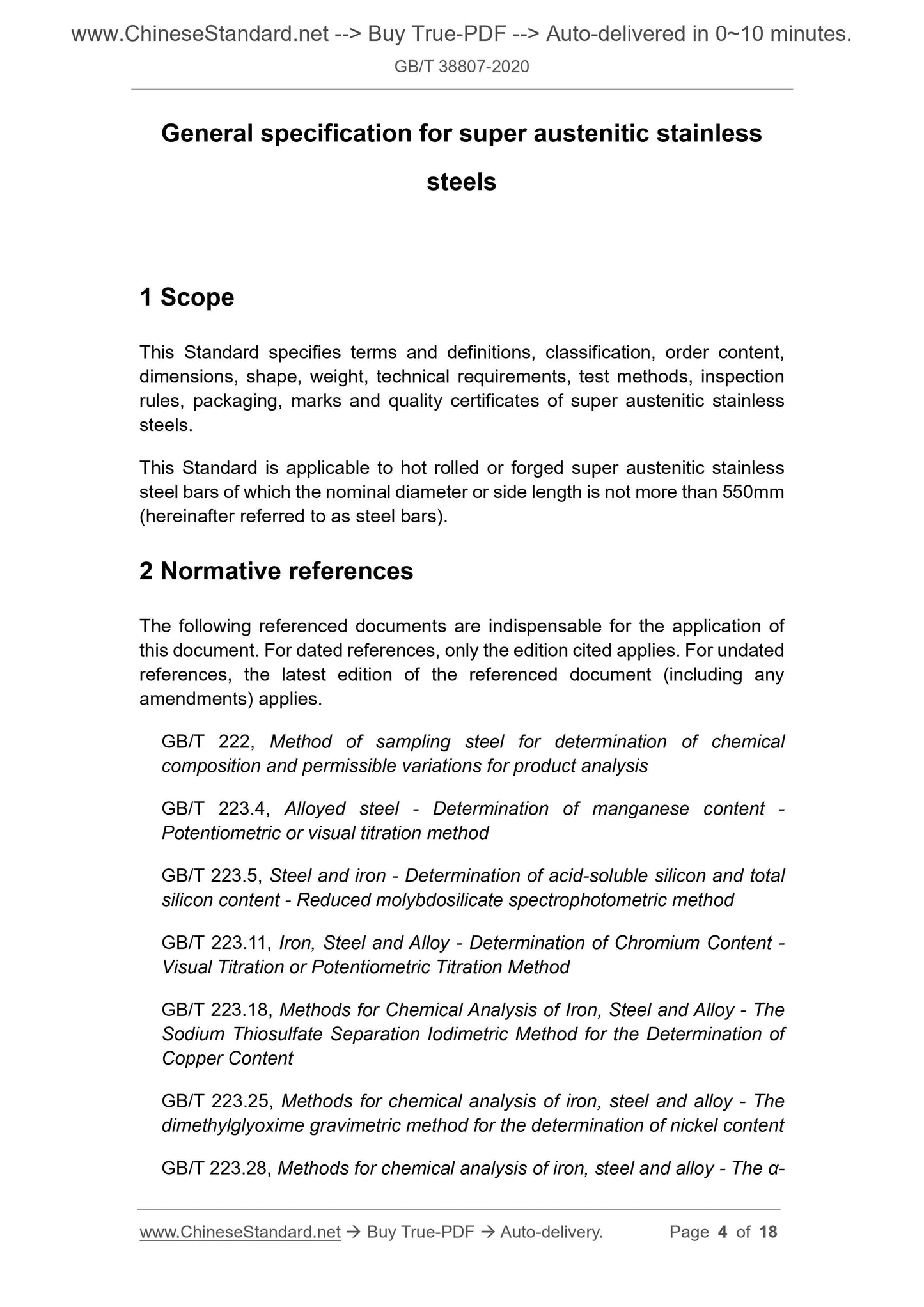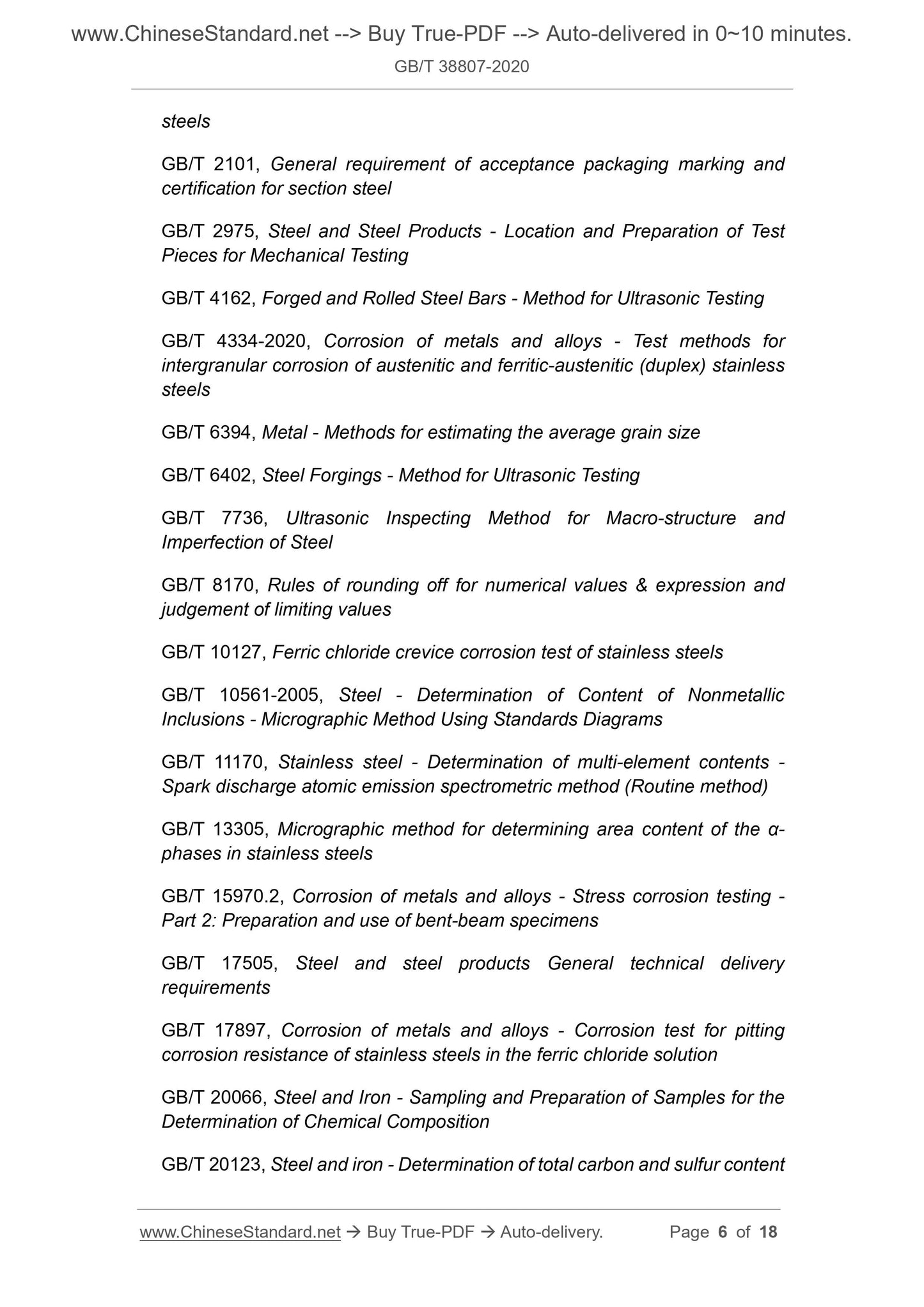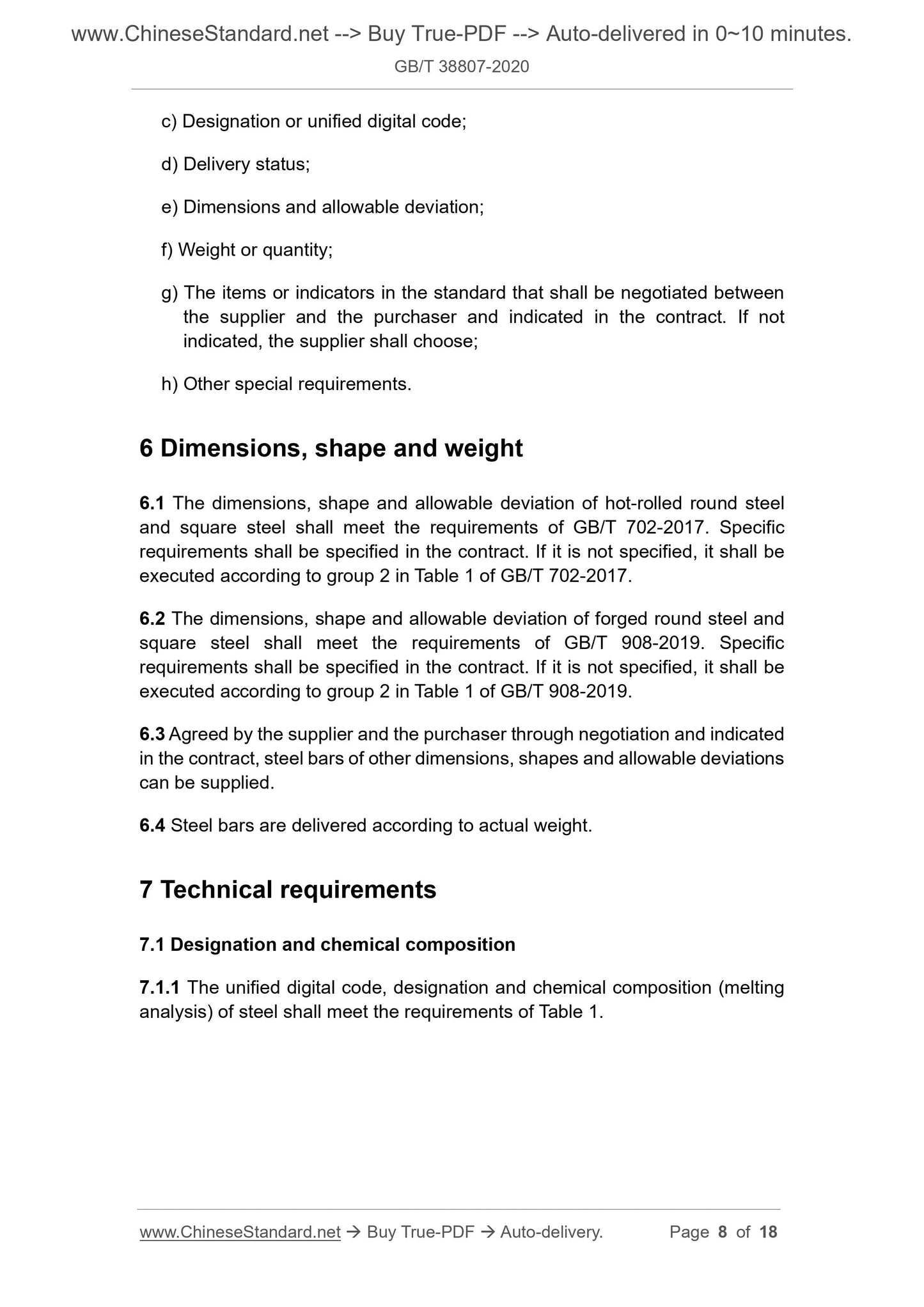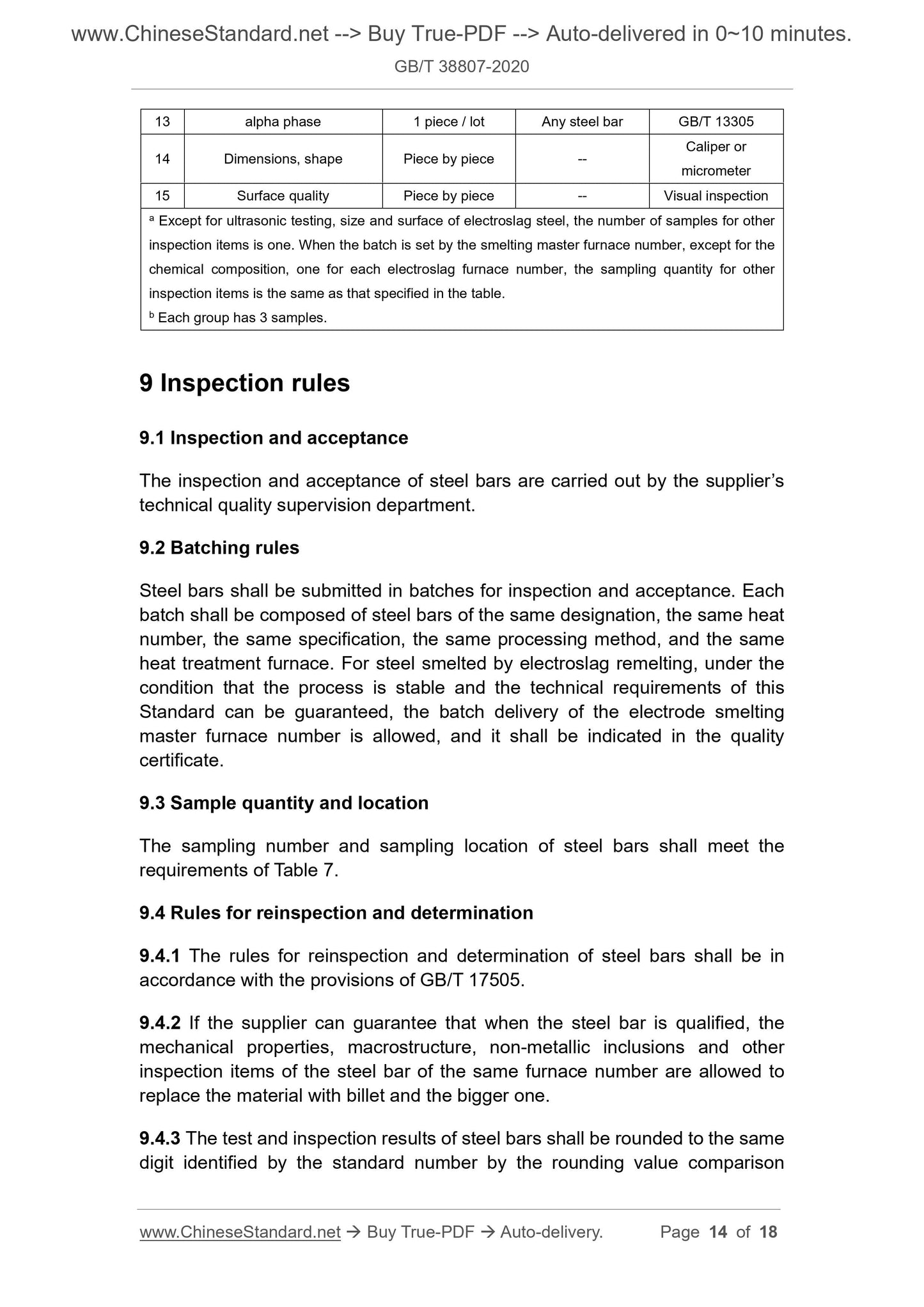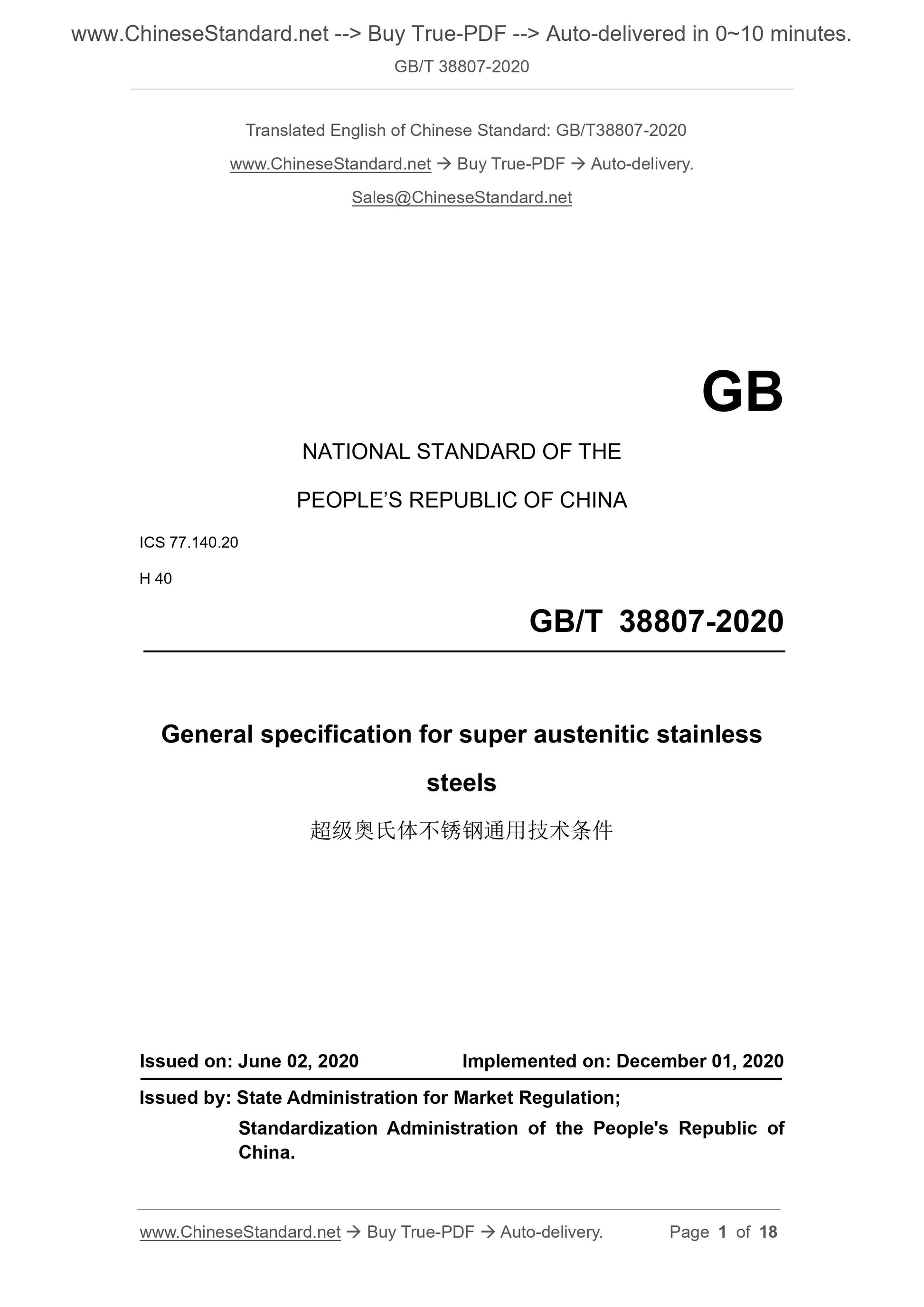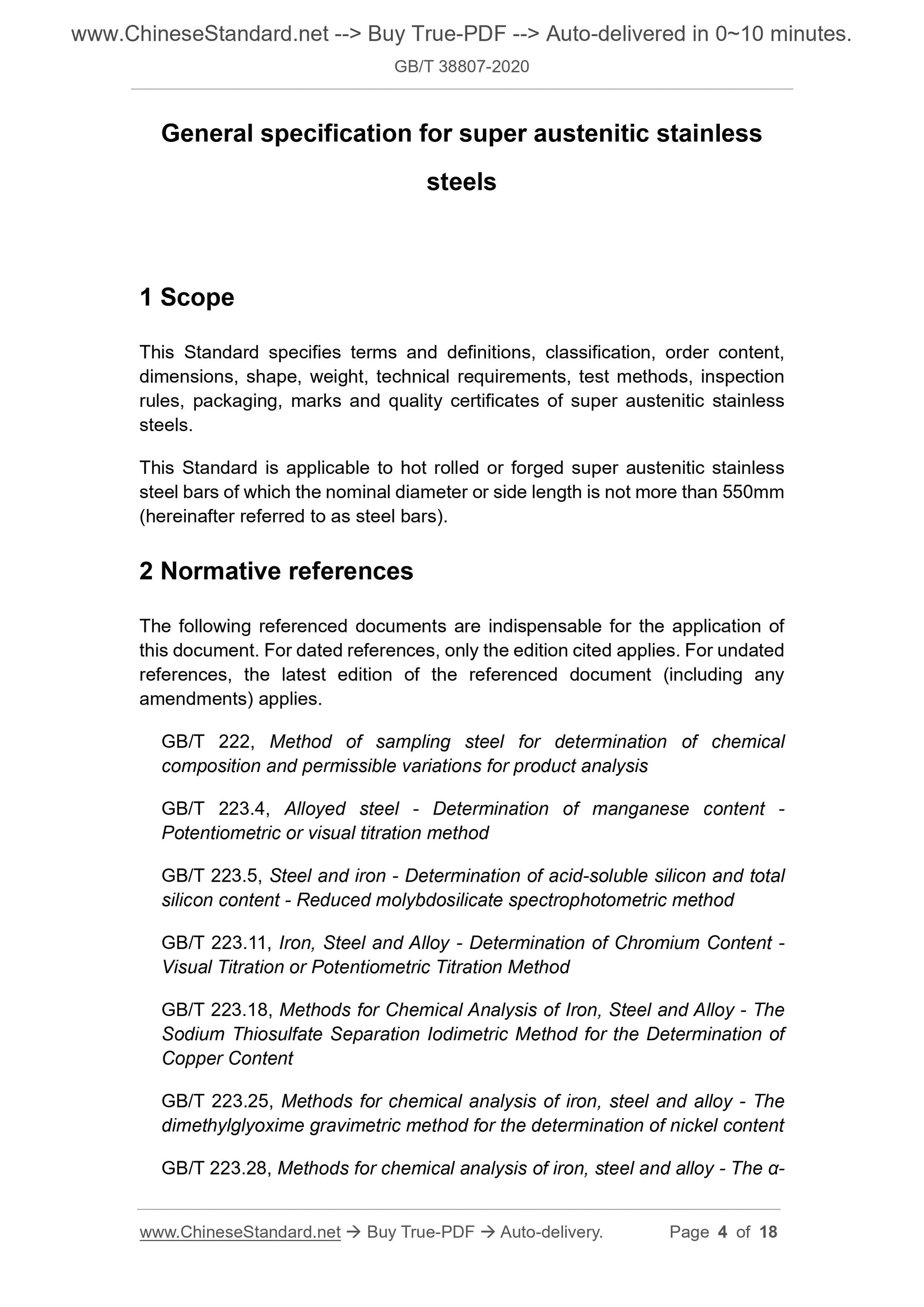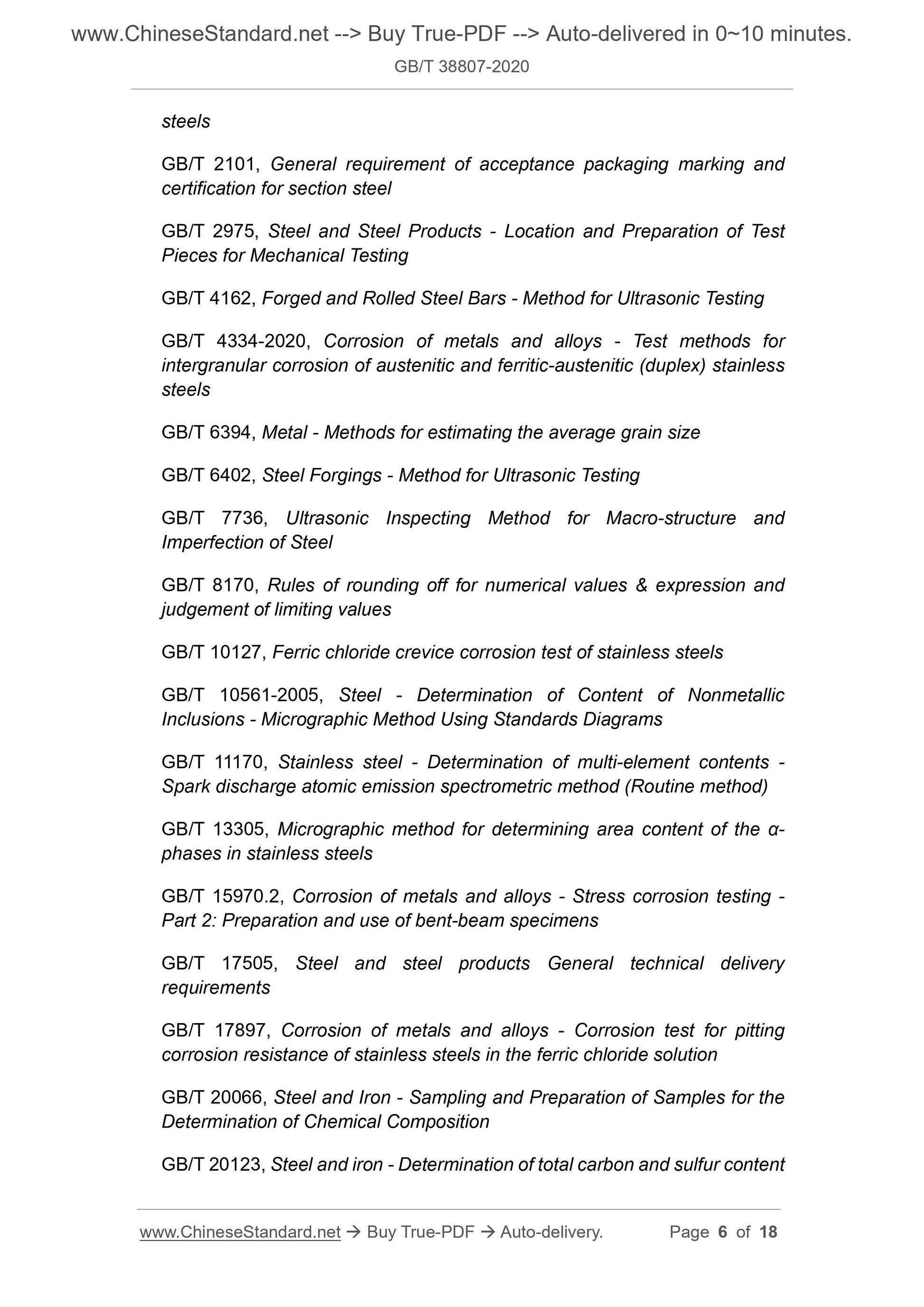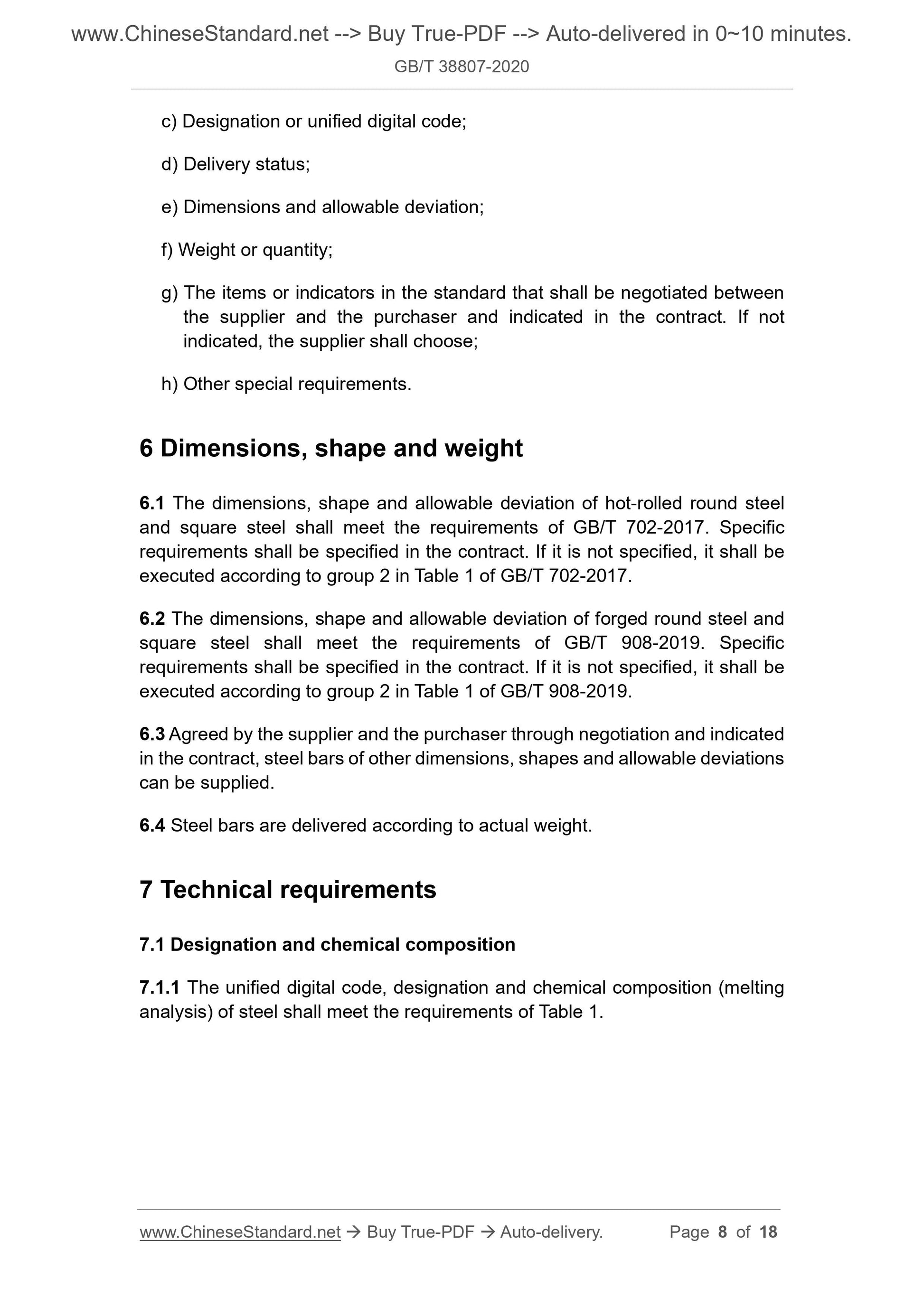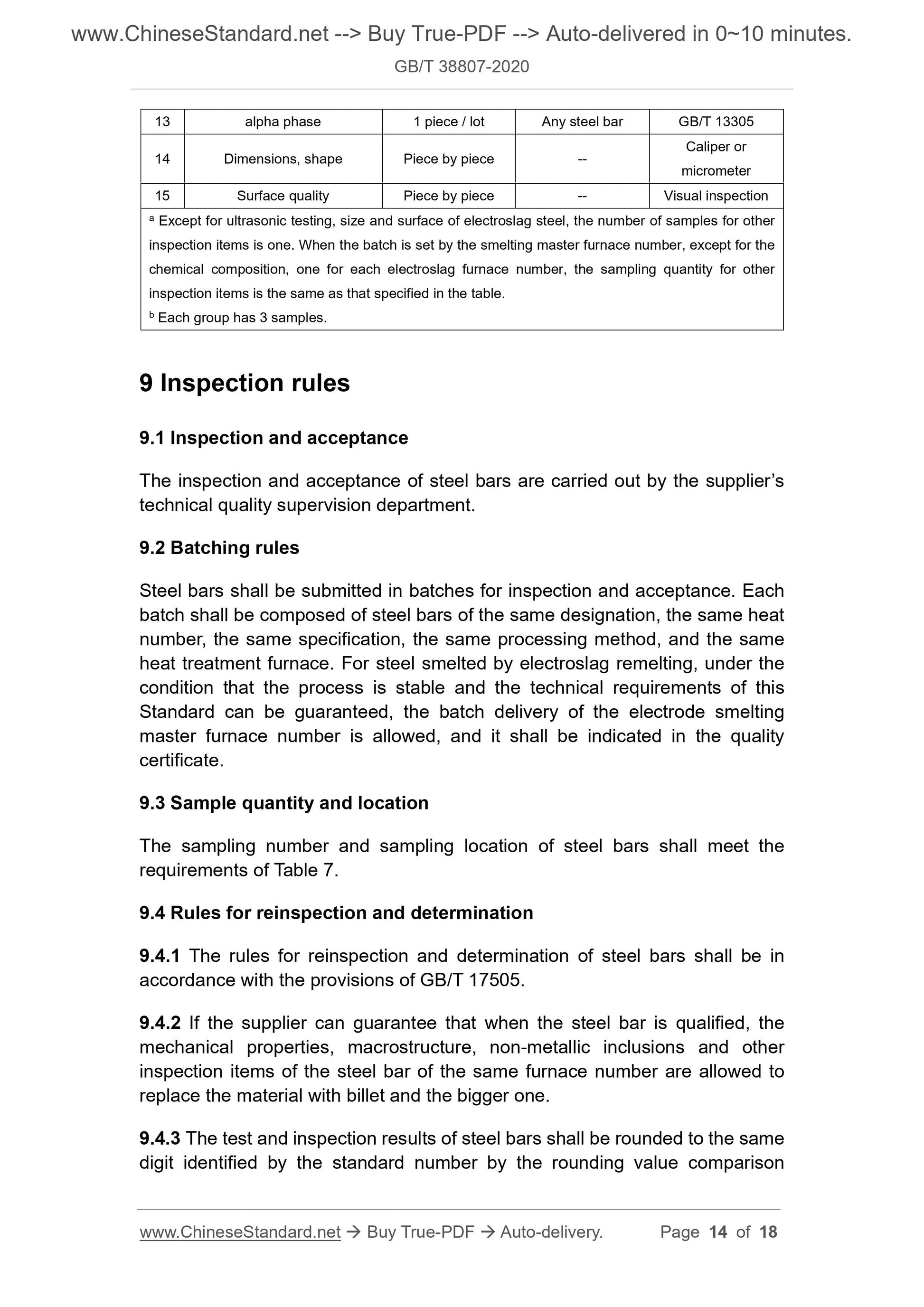1
/
of
6
www.ChineseStandard.us -- Field Test Asia Pte. Ltd.
GB/T 38807-2020 English PDF (GB/T38807-2020)
GB/T 38807-2020 English PDF (GB/T38807-2020)
Regular price
$185.00
Regular price
Sale price
$185.00
Unit price
/
per
Shipping calculated at checkout.
Couldn't load pickup availability
GB/T 38807-2020: General specification for super austenitic stainless steels
Delivery: 9 seconds. Download (and Email) true-PDF + Invoice.Get Quotation: Click GB/T 38807-2020 (Self-service in 1-minute)
Newer / historical versions: GB/T 38807-2020
Preview True-PDF
Scope
This Standard specifies terms and definitions, classification, order content,dimensions, shape, weight, technical requirements, test methods, inspection
rules, packaging, marks and quality certificates of super austenitic stainless
steels.
This Standard is applicable to hot rolled or forged super austenitic stainless
steel bars of which the nominal diameter or side length is not more than 550mm
(hereinafter referred to as steel bars).
Basic Data
| Standard ID | GB/T 38807-2020 (GB/T38807-2020) |
| Description (Translated English) | General specification for super austenitic stainless steels |
| Sector / Industry | National Standard (Recommended) |
| Classification of Chinese Standard | H40 |
| Classification of International Standard | 77.140.20 |
| Word Count Estimation | 14,112 |
| Date of Issue | 2020-06-02 |
| Date of Implementation | 2020-12-01 |
| Issuing agency(ies) | State Administration for Market Regulation, China National Standardization Administration |
Share
